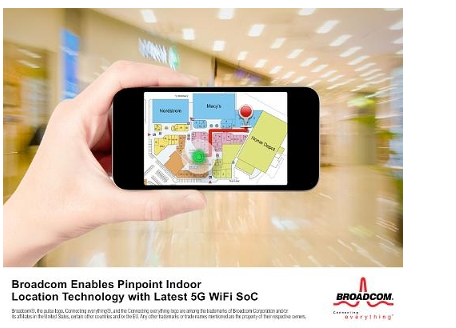 Broadcom is expanding its XLP II multi-core communications processors family designed for Network Functions Virtualization (NFV) and Software Defined Networking (SDN) equipment.
Broadcom is expanding its XLP II multi-core communications processors family designed for Network Functions Virtualization (NFV) and Software Defined Networking (SDN) equipment.The XLP500 processor features 32 NXCPUs with an innovative quad-issue, quad-threaded superscalar architecture with out-of-order execution for 80 Gbps performance. The processor supports Broadcom's Open NFV platform provides seamless interoperability with Broadcom's StrataXGS Switch Series.
XLP500 Series Key Features:
- Optimized driver and tight integration with Broadcom's FASTPATH software enables seamless interoperability with Broadcom's StrataXGS Switch Series
- Support for Broadcom's Open NFV platform enables seamless migration of virtual functions independent of Instruction Set Architectures (ISAs)
- Full end-to-end virtualization of CPUs memory, I/Os and acceleration engines
- Integrated autonomous acceleration engines support a broad range of applications such as Deep Packet Inspection (DPI), encryption, network acceleration and storage
- Configurable pool of high performance multi-core processors along with application-specific engines accelerates advanced networking and security functions in a virtualized environment
- Supports open-source virtualization platforms such as KVM, QEMU and OVS
- Integrated high speed I/Os including 40GEs, 10GEs, GE, HiGig2 and Interlaken
- Dedicated lanes for PCIE Gen3.0 and SATA3.0
"For service providers and data center operators looking to manage dynamically changing workloads and massive data requirements, the XLP500 Series provides the processing performance and flexibility required to deploy new services and cost-effectively scale the network," said Chris O'Reilly, Broadcom, Senior Director of Product Marketing, Processors & Wireless Infrastructure. "With the addition of the XLP500 Series, Broadcom now offers the industry's broadest end-to-end portfolio of 28 nanometer multi-core communications processors, spanning 4 NXCPUs to 640 NXCPUs."
"In order to facilitate a successful industry-wide NFV rollout, HP's OpenNFV program requires an open platform to easily migrate virtual functions across systems and a new class of processors that can improve packet processing, help reduce hardware costs, simplify applications and improve time-to-market," said Vinay Saxena, Chief Architect, Network Functions Virtualization, Hewlett Packard. "We believe our collaboration with Broadcom on its Open NFV platform, and communications processors such as the XLP500 Series, are ideally suited to deliver the right balance of power, performance and workload flexibility needed to meet the requirements of NFV solutions."
Broadcom is also working on a dual-core, 64-bit ARM processor optimized for embedded applications. The company said its forthcoming Vulcan processor will be the highest performance ARMv8 CPU (see below).
http://www.broadcom.com/press/release.php?id=s836479
In October 2013, Broadcom unveiled its ARMv8-A architecture for a new generation of multicore processors designed to deliver server-class performance for network functions virtualisation (NFV). The new design is built around a 64-bit ARM core with virtualized accelerators for networking, communications, big data, storage and security applications. The design also features a quad-issue, quad-threaded 64-bit ARMv8-A core with superscalar out-of-order execution. The core enables 3-GHz performance in the advanced 16-nm FINFET process node.

“By offering the industry’s highest performance ARM-based multi-core processor architecture, Broadcom is expanding its technical leadership in multiple generations of multi-core processing,” said Ron Jankov, Broadcom Senior Vice President and General Manager, Processor and Wireless Infrastructure. “Our innovations in the CPU core and comprehensive virtualization, along with our adoption of 16-nm FINFET technology, will further separate us from our competitors.”
Broadcom and ARM announced a partnership to define and develop an open, standards-based NFV software environment for the ARM ecosystem. The companies said they will work with members of the Linaro Networking Group and European Telecommunications Standards Institute (ETSI) to standardize the environment’s programming model, tool chains, application programming model, tool chains, application programming interfaces and networking-specific libraries across the industry.



















